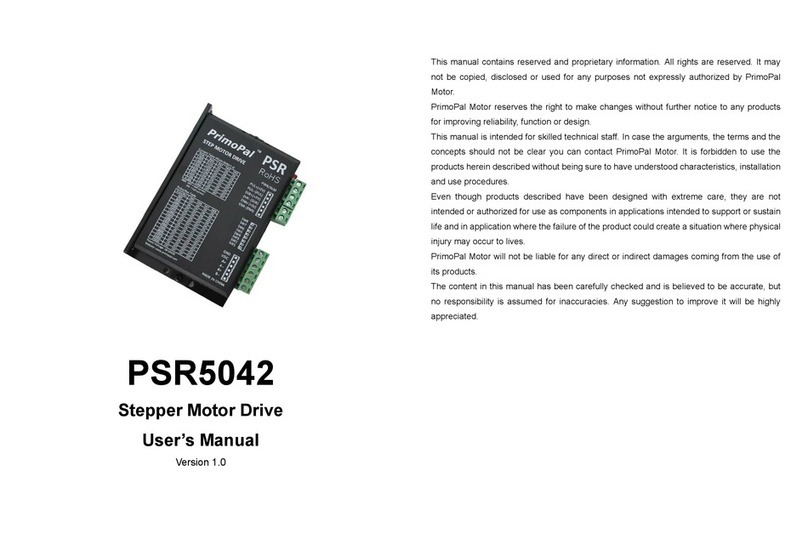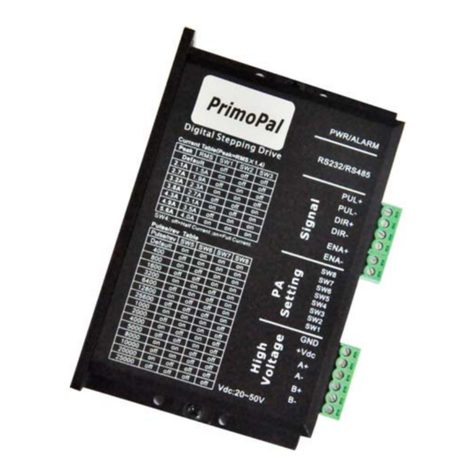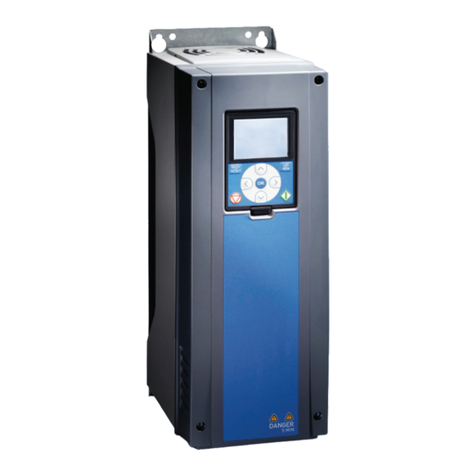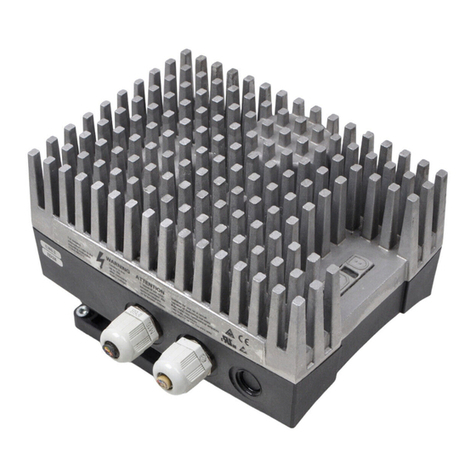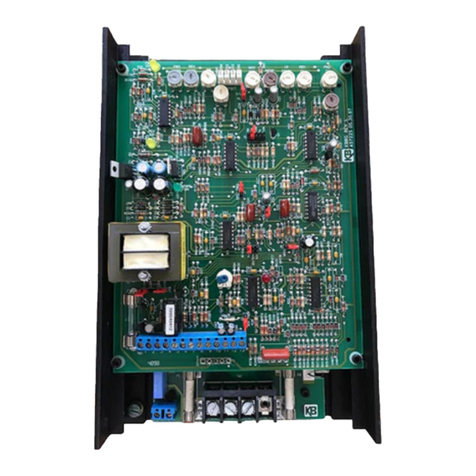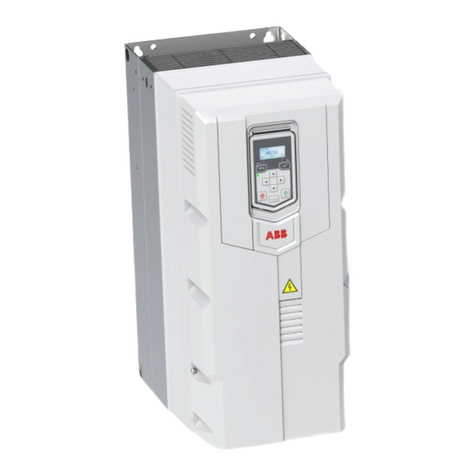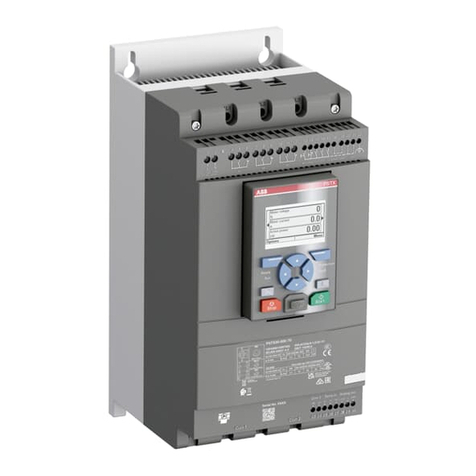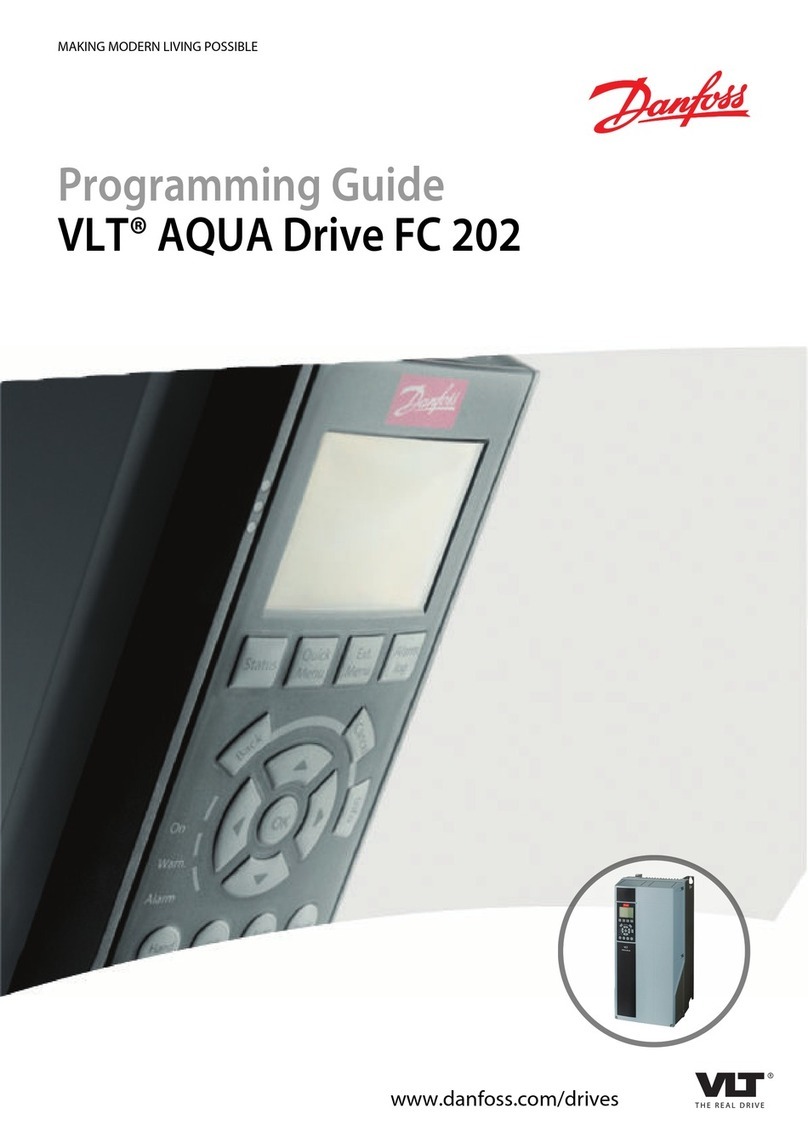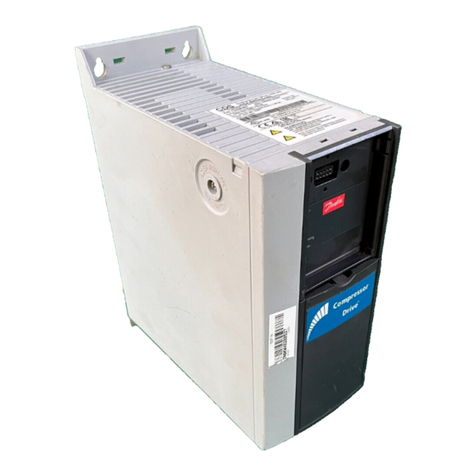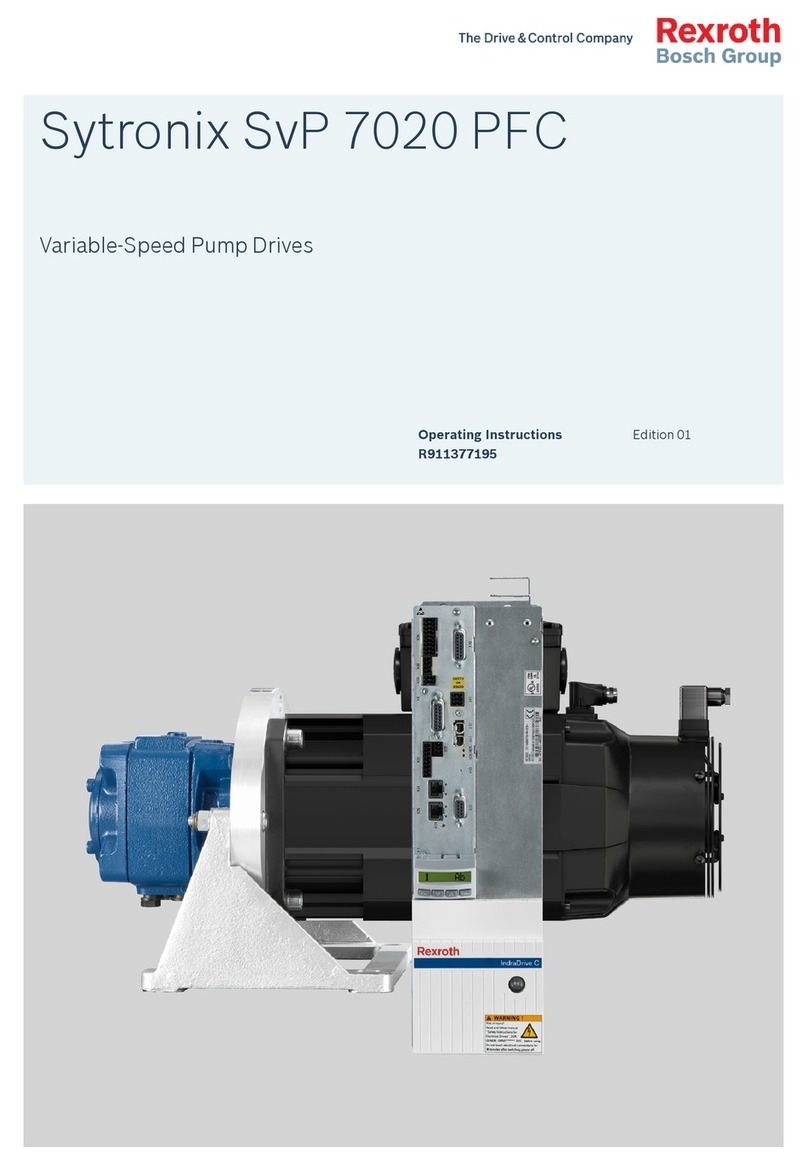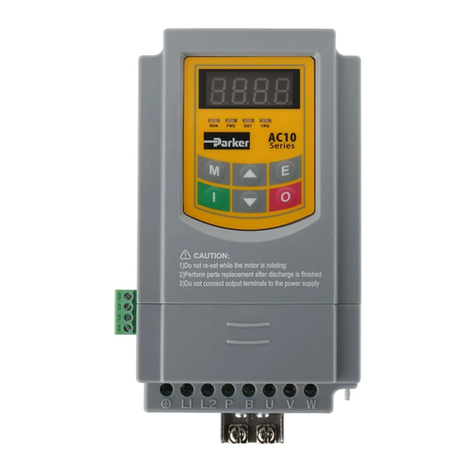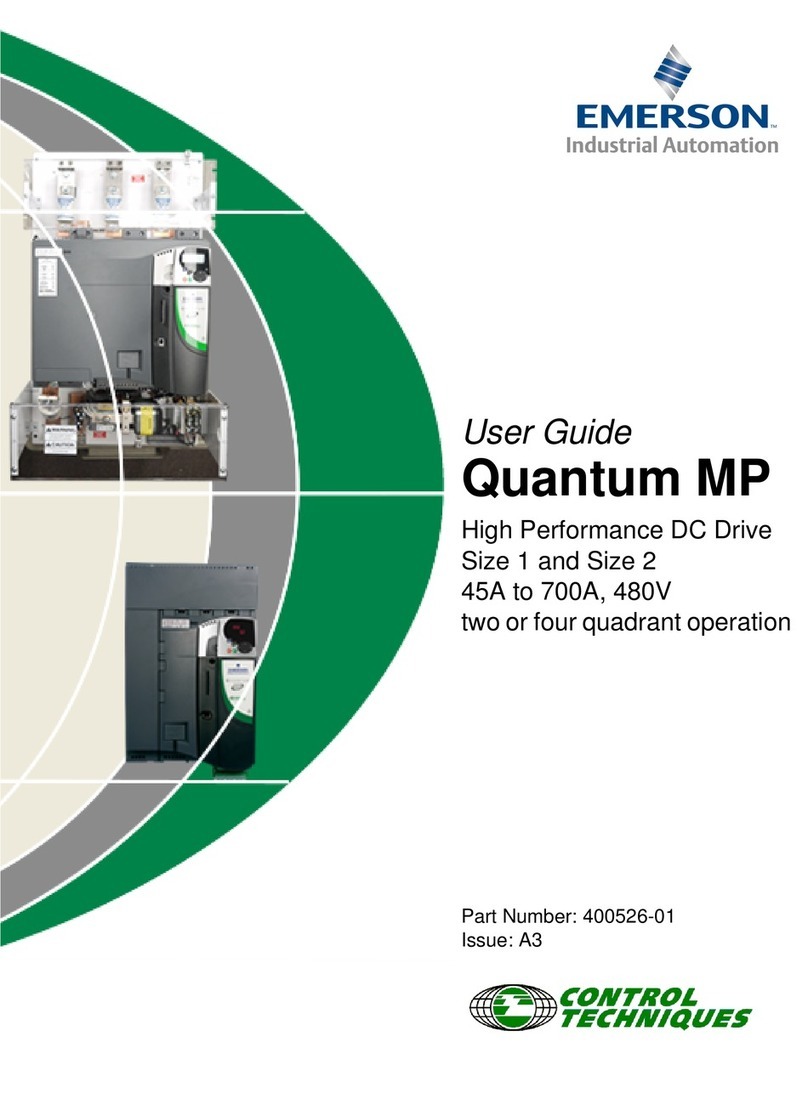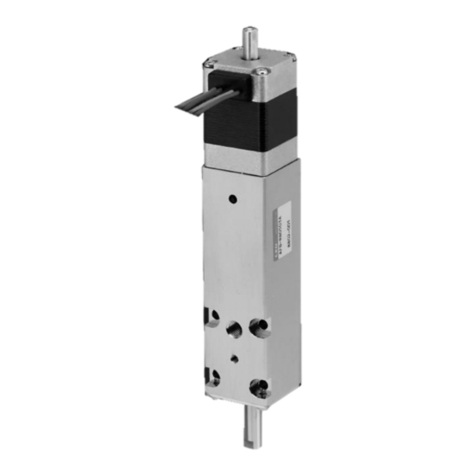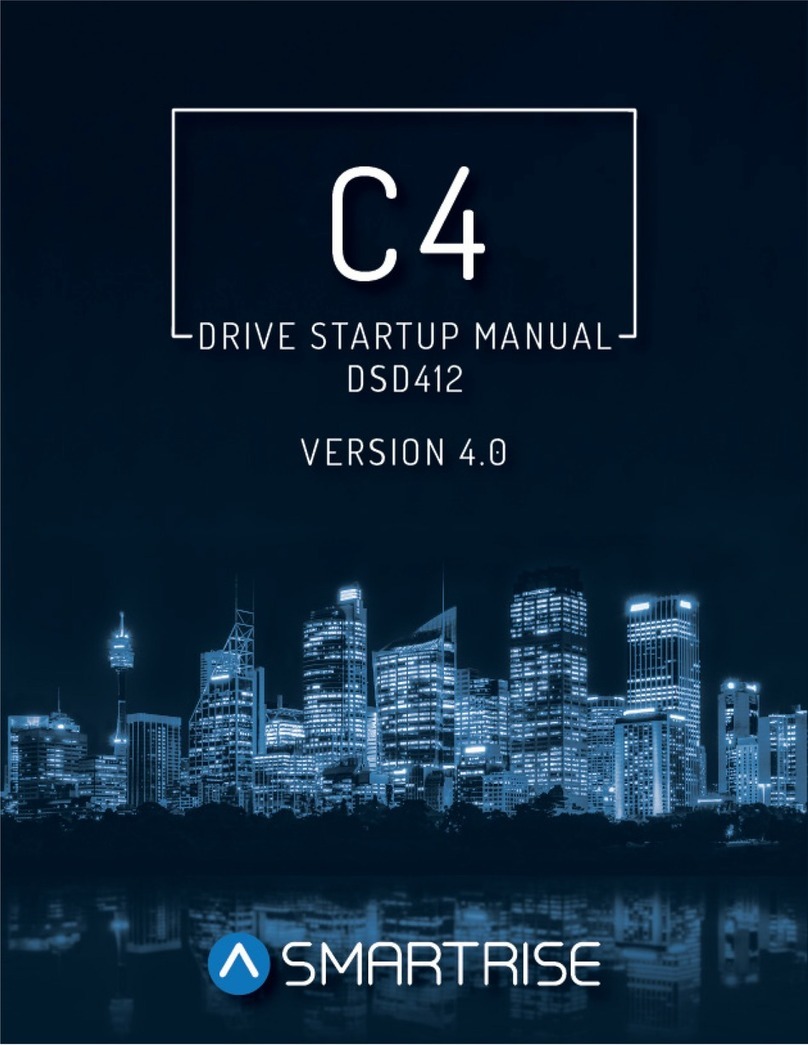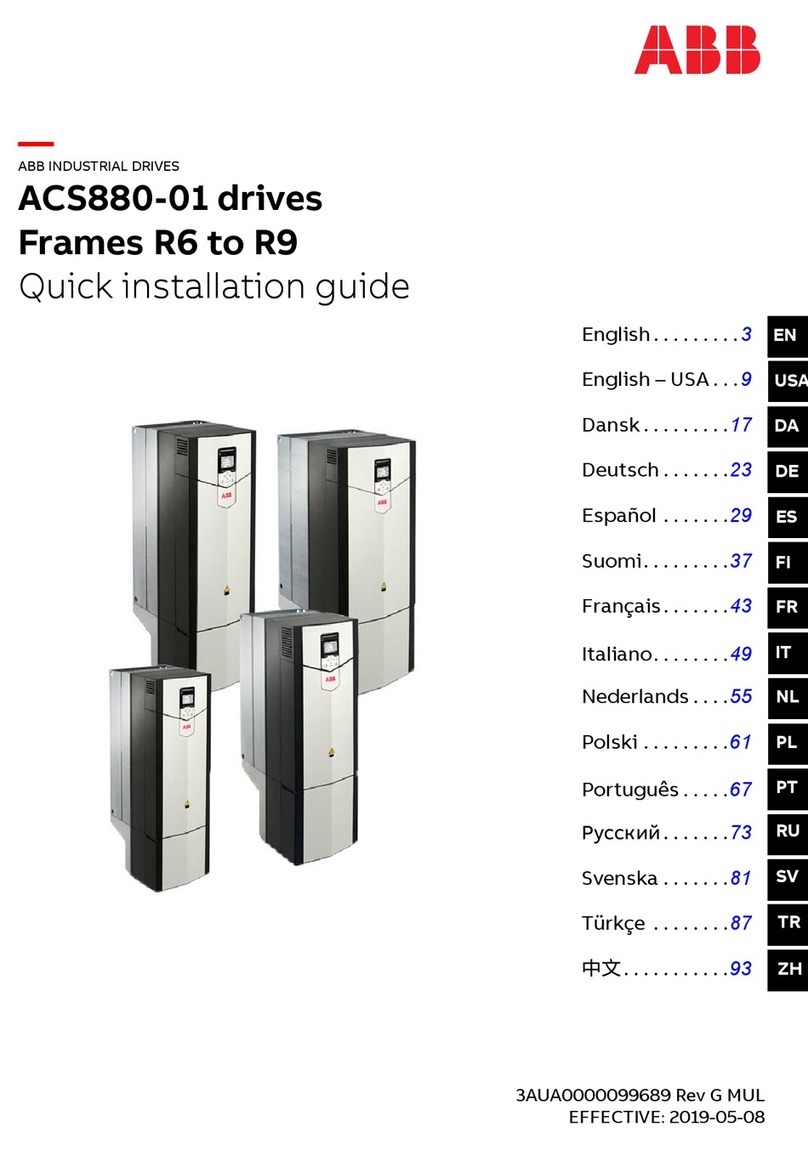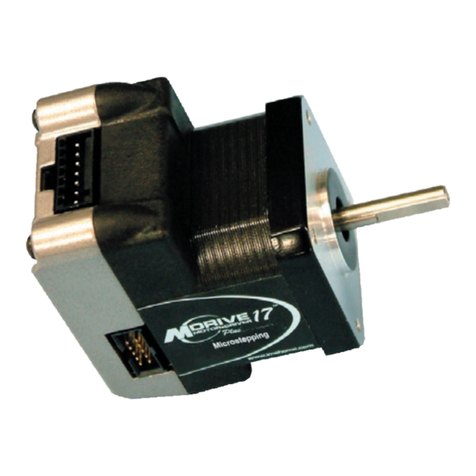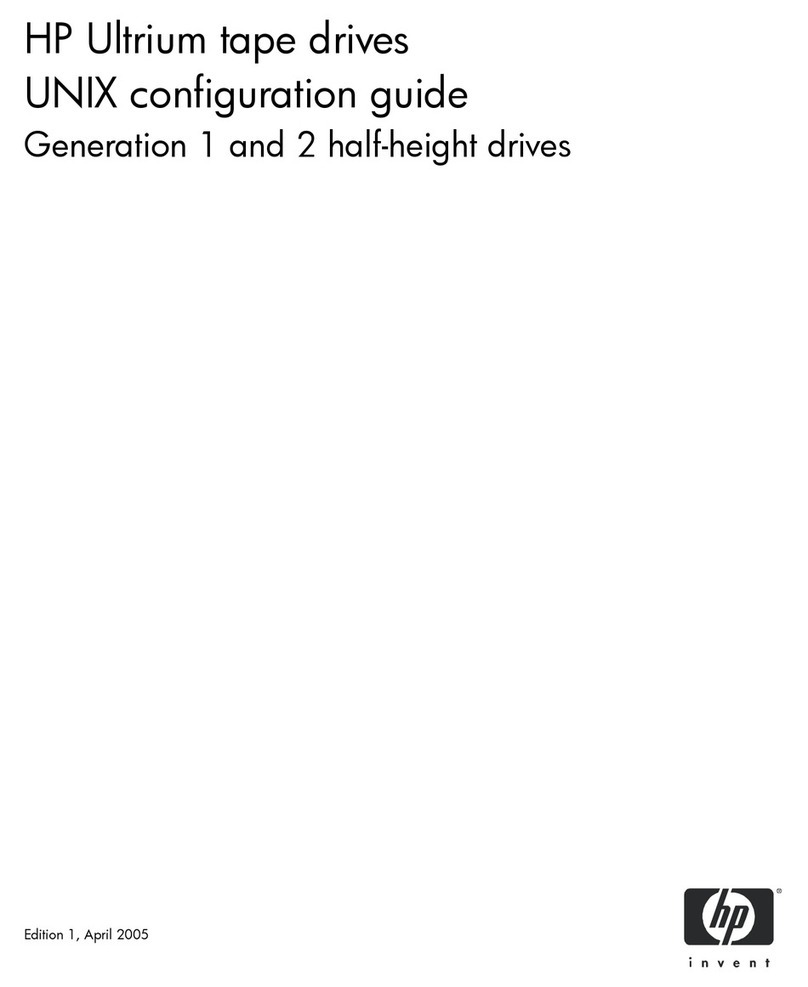PrimoPal PSR8078 User manual

PSR8078
Stepper Motor Drive
User’s Manual
Version 1.0
This manual contains reserved and proprietary information. All rights are reserved. It may
not be copied, disclosed or used for any purposes not expressly authorized by PrimoPal
Motor.
PrimoPal Motor reserves the right to make changes without further notice to any products
for improving reliability, function or design.
This manual is intended for skilled technical staff. In case the arguments, the terms and the
concepts should not be clear you can contact PrimoPal Motor. It is forbidden to use the
products herein described without being sure to have understood characteristics, installation
and use procedures.
Even though products described have been designed with extreme care, they are not
intended or authorized for use as components in applications intended to support or sustain
life and in application where the failure of the product could create a situation where physical
injury may occur to lives.
PrimoPal Motor will not be liable for any direct or indirect damages coming from the use of
its products.
The content in this manual has been carefully checked and is believed to be accurate, but
no responsibility is assumed for inaccuracies. Any suggestion to improve it will be highly
appreciated.
Contacts:
● Technical support: support@primopal.com
● Sales information: sales@primopal.com

Table of Contents
Table of Contents
1. Introduction, Features and Applications ....................................................... 1
1.1 Introduction ......................................................................................... 1
1.2 Features .............................................................................................. 1
1.3 Applications ......................................................................................... 1
2. Specifications ............................................................................................... 1
2.1 Electrical Specifications (Tj = 25°C)...................................................... 1
2.2 Environmental and Other Specifications ............................................. 2
2.3 Mechanical Specifications (unit=mm, 1 inch=25.4 mm) ...................... 2
3. Pin Assignment and Description .................................................................. 3
3.1 Connector P1 Configuration ................................................................ 3
3.2 Connector P2 Configuration ................................................................ 3
4. Control Signal Connector (P1) Interface ...................................................... 4
5. Connecting the Motor ................................................................................... 5
5.1 Connections to 4-lead Motors ............................................................. 5
5.2 Connections to 6-lead Motors ............................................................. 5
5.2.1 Half Coil Configurations ............................................................ 5
5.2.2 Full Coil Configurations ............................................................. 6
5.3 Connections to 8-lead Motors ............................................................. 6
5.3.1 Series Connections ................................................................... 6
5.3.2 Parallel Connections ................................................................. 7
6. Power Supply Selection ............................................................................... 7
6.1 Multiple Drives .................................................................................... 7
6.2 Selecting Supply Voltage .................................................................... 7
7. Selecting Microstep Resolution and Drive Output Current ........................... 8
7.1 Microstep Resolution Selection ........................................................... 8
7.2 Current Settings .................................................................................. 8
8. Wiring Notes ................................................................................................ 9
9. Typical Connections ................................................................................... 10
10. Sequence Chart of Control Signals .......................................................... 11
Table of Contents
11. Frequently Asked Questions ..................................................................... 11
11.1 Symptoms and Possible Causes ..................................................... 12
12. Warranty ................................................................................................... 13
12.1 Twelve Month Limited Warranty ...................................................... 13
12.2 Exclusions ....................................................................................... 13
12.3 Obtaining Warranty Service ............................................................ 13
12.4 Shipping Failed Product .................................................................. 13

PSR8078 User Manual
REV1.0 1
1. Introduction, Features and Applications
1.1 Introduction
The stepper drive PSR8078 is a high performance microstepping driver based on
pure-sinusoidal current control technology. Owing to the advanced technology, it could output
smaller noise, lower heating, smoother movement and have better performances at higher
speed than most of the drivers in the markets. It is suitable for driving 2-phase and 4-phase
hybrid stepping motors.
1.2 Features
High performance, cost-effective
Supply voltage up to +80VDC
Output current up to 7.8A
Automatic idle-current reduction
Pulse input frequency up to 300 KHz
Pure-sinusoidal current control
technology
TTL compatible and optically isolated
input signals
14 selectable resolutions in decimal and binary,
up to 51,200 steps/rev
Suitable for 2-phase and 4-phase motors
Short-voltage, over-voltage and short-circuit
protection
1.3 Applications
The stepper drive PSR8078 is suitable for a wide range of stepping motors from NEMA 34 to
NEMA 42, which is widely used in various kinds of machines, such as CNC routers, cutting
machines, packing devices, pick-place devices, and so on. Particularly suitable for the
applications require low cost, low noise, low heating and high speed performance.
2. Specifications
2.1 Electrical Specifications (Tj = 25°C)
Parameters PSR8078
Min Typical Max Unit
Output current 2.8 - 7.8 (5.6 RMS) A
Supply voltage +24 +60 +80 VDC
Logic signal current 7 10 16 mA
Pulse input frequency 0 - 300 kHz
Isolation resistance 500 MΩ
PSR8078 User Manual
REV1.0 2
2.2 Environmental and Other Specifications
Operating
Environment
Ambient
temperature
0 to +50 °C (+32 to +122 °F)
(non-freezing)
Humidity 90% or less (non-condensing)
Altitude Up to 1000 m (3300 ft.) above sea level
Surrounding
atmosphere No corrosive gas, dust, water or oil
Storage
environment
Ambient
temperature
-10 to +70 °C (+14 to +158 °F)
(non-freezing)
Humidity 90% or less (non-condensing)
Altitude Up to 3000 m (10000 ft.) above sea level
Surrounding
atmosphere No corrosive gas, dust, water or oil
Heat sinking method Natural Cooling or fan-forced cooling
Weight Approx. 550 gram
2.3 Mechanical Specifications (unit=mm, 1 inch=25.4 mm)
Figure 1: Mechanical dimensions
*Recommend use side mounting for better heat dissipation

PSR8078 User Manual
REV1.0 3
Note: 1. Driver’s reliable working temperature should be less than 70°C (158°F), and motor
working temperature should be less than 80°C (176°F);
2. It is recommended to use automatic idle-current mode, namely current automatically
reduce to 50% when motor stops, so as to reduce driver heating and motor heating;
3. It is recommended to mount the driver vertically to maximize heat sink area. Use forced
cooling method to cool the system if necessary.
3. Pin Assignment and Description
The stepper drive PSR8078 has two connectors, connector P1 for control signals connection,
and connector P2 for power and motor connection. The following tables are brief description
of the two connectors of the stepper drive PSR8078. More detailed description of the pins
and related items are presented in section 4, 5, 9.
3.1 Connector P1 Configuration
Pin Function Details
PUL+
Pulse signal: This input represents pulse signal, effective for each rising
edge; 4-5V when PUL-HIGH, 0-0.5V when PUL-LOW. For reliable
response, pulse width should be longer than 1.5μs. Series connect
resistors for current-limiting when +12V or +24V used (The same as DIR
and ENA signals).
PUL-
DIR+ Direction signal: HIGH/LOW level signal, correlative to motor rotation
direction. For reliable response, DIR must be ahead of PUL by 5μs at
least. 4-5V when DIR- HIGH, 0-0.5V when DIR-LOW. Motor rotation
direction also depends upon the connection of the motor windings,
exchange any motor phase can reverse motor rotation direction.
DIR-
ENA+ Enable signal: This signal is used for enabling/disabling drive. High level
for enabling drive and low level for disabling drive. Usually left
unconnected (enabled).
ENA-
3.2 Connector P2 Configuration
Pin Function Details
GND DC power ground
+V DC power supply, 24~80VDC, Including voltage fluctuation and EMF
voltage.
A+, A- Motor Phase A
B+, B- Motor Phase B
PSR8078 User Manual
REV1.0 4
4. Control Signal Connector (P1) Interface
The stepper drive PSR8078 can accept differential and single-ended inputs (including
open-collector and PNP output). The stepper drive PSR8078 has 3 optically isolated logic
inputs which are located on connector P1 to accept line driver control signals. These inputs
are isolated to minimize or eliminate electrical noises coupled onto the drive control signals.
Recommend use line driver control signals to increase noise immunity of the driver in
interference environments. In the following figures, connections to open-collector and PNP
signals are illustrated.
Figure 2: Connections to open-collector signal (common-anode)
Figure 3: Connections to PNP signal (common-cathode)

PSR8078 User Manual
REV1.0 5
5. Connecting the Motor
The stepper drive PSR8078 can drive any 2-pahse and 4-pahse hybrid stepping motors.
5.1 Connections to 4-lead Motors
4-lead motors are the least flexible but easiest to wire. Speed and torque will depend on
winding inductance. In setting the drive output current, multiply the specified phase current
by 1.4 to determine the peak output current.
Figure 4: 4-lead Motor Connections
5.2 Connections to 6-lead Motors
Like 8-lead stepping motors, 6-lead motors have two configurations available for high speed
or high torque operation. The higher speed configuration, or half coil, is so described
because it uses one half of the motor’s inductor windings. The higher torque configuration, or
full coil, uses the full windings of the phases.
5.2.1 Half Coil Configurations
As previously stated, the half coil configuration uses 50% of the motor phase windings. This
gives lower inductance, hence, lower torque output. Like the parallel connection of 8-lead
motor, the output torque will be more stable at higher speed. This configuration is also
referred to as half chopper. In setting the drive output current multiply the specified per phase
(or unipolar) current rating by 1.4 to determine the peak output current.
Figure 5: 6-lead motor half coil (higher speed) connections
PSR8078 User Manual
REV1.0 6
5.2.2 Full Coil Configurations
The full coil configuration on a 6-lead motor should be used in applications where higher
torque at lower speed is desired. This configuration is also referred to as full copper. In full
coil mode, the motors should be run at only 70% of their rated current to prevent overheating.
Figure 6: 6-lead motor full coil (higher torque) connections
5.3 Connections to 8-lead Motors
8-lead motors offer a high degree of flexibility to the system designer in that they may be
connected in series or parallel, thus satisfying a wide range of applications.
5.3.1 Series Connections
A series motor configuration would typically be used in applications where a higher torque at
lower speed is required. Because this configuration has the most inductance, the
performance will start to degrade at higher speed. In series mode, the motors should also be
run at only 70% of their rated current to prevent overheating.
Figure 7: 8-lead motor series connections

PSR8078 User Manual
REV1.0 7
5.3.2 Parallel Connections
An 8-lead motor in a parallel configuration offers a more stable, but lower torque at lower
speed. But because of the lower inductance, there will be higher torque at higher speed.
Multiply per phase (or unipolar) current rating by 1.96, or the bipolar current rating by 1.4, to
determine the peak output current.
Figure 8: 8-lead motor parallel connections
6. Power Supply Selection
The stepper drive PSR8078 can match medium and large stepping motors (from NEMA size
34 to 42). To achieve good driving performances, it is important to select supply voltage and
output current properly. Generally speaking, supply voltage determines the high speed
performance of the motor, while output current determines the output torque of the driven
motor (particularly at lower speed). Higher supply voltage will allow higher motor speed to be
achieved, at the price of more noise and heating. If the motion speed requirement is low, it’s
better to use lower supply voltage to decrease noise, heating and improve reliability.
6.1 Multiple Drives
It is recommended to have multiple drives to share one power supply to reduce cost, if the
supply has enough capacity. To avoid cross interference, DO NOT daisy-chain the power
supply input pins of the drives. (Instead, please connect them to power supply separately.)
6.2 Selecting Supply Voltage
The power MOSFETS inside the stepper drive PSR8078 can actually operate within +24V~
+80VDC, including power input fluctuation and back EMF voltage generated by motor coils
during motor shaft deceleration. Higher supply voltage can increase motor torque at higher
speeds, thus helpful for avoiding losing steps. However, higher voltage may cause bigger
motor vibration at lower speed, and it may also cause over-voltage protection or even drive
damage. Therefore, it is suggested to choose only sufficiently high supply voltage for
intended applications, and it is suggested to use power supplies with theoretical output
voltage of +24~+ 72V, leaving room for power fluctuation and back-EMF.
PSR8078 User Manual
REV1.0 8
7. Selecting Microstep Resolution and Drive Output Current
This drive uses an 8-bit DIP switch to set microstep resolution, and motor operating current,
as shown below:
7.1 Microstep Resolution Selection
Microstep resolution is set by SW5, 6, 7, 8 of the DIP switch as shown in the following table:
Microstep Steps/Rev.
(for 1.8°motor) SW5 SW6 SW7 SW8
2 400 ON ON ON ON
4 800 OFF ON ON ON
8 1,600 ON OFF ON ON
16 3,200 OFF OFF ON ON
32 6,400 ON ON OFF ON
64 12,800 OFF ON OFF ON
128 25,600 ON OFF OFF ON
256 51,200 OFF OFF OFF ON
5 1,000 ON ON ON OFF
10 2,000 OFF ON ON OFF
25 5,000 ON OFF ON OFF
50 10,000 OFF OFF ON OFF
125 25,000 ON ON OFF OFF
250 50,000 OFF ON OFF OFF
7.2 Current Settings
For a given motor, higher drive current will make the motor to output more torque, but at the
same time causes more heating in the motor and drive. Therefore, output current is generally
set to be such that the motor will not overheat for long time operation. Since parallel and
serial connections of motor coils will significantly change resulting inductance and resistance,
it is therefore important to set drive output current depending on motor phase current, motor
leads and connection methods. Phase current rating supplied by motor manufacturer is
important in selecting drive current. However, the selection also depends on leads and
connections.
The first three bits (SW1, 2, 3) of the DIP switch are used to set the dynamic current. Select a

PSR8078 User Manual
REV1.0 9
setting closest to your motor’s required current.
Peak Current RMS Current SW1 SW2 SW3
2.8A 2.0A ON ON ON
3.5A 2.5A OFF ON ON
4.2A 3.0A ON OFF ON
4.9A 3.5A OFF OFF ON
5.7A 4.0A ON ON OFF
6.4A 4.6A OFF ON OFF
7.0A 5.0A ON OFF OFF
7.8A 5.6A OFF OFF OFF
Notes: Due to motor inductance, the actual current in the coil may be smaller than the
dynamic current settings, particularly under high speed condition.
Standstill Current
SW4 is used for this purpose. OFF means the standstill current is set to be half of the
selected dynamic current. ON means standstill current is set to be the same as the selected
dynamic current.
The standstill current of the stepper drive PSR8078 will automatically be reduced to 50% of
the selected dynamic current setting one second after the last pulse. Theoretically, this will
reduce motor heating to 25% (due to P=I2*R) of the original value. If the application needs a
different standstill current, please contact PrimoPal Motor.
8. Wiring Notes
In order to improve anti-interference performance of the drive, it is recommended to use
twisted pair shield cable.
To prevent noise incurred in Pulse/Direction signal, Pulse/Direction signal wires and
motor wires should not be tied up together. It is better to separate them by at least 10
cm, otherwise the disturbing signals generated by motor will easily disturb pulse
direction signals, causing motor position error, system instability and other failures.
If a power supply serves several drives, separately connecting the drives is
recommended instead of daisy-chaining.
It is prohibited to pull and plug connector P2 while the drive is powered ON, because
there is high current flowing through motor coils (even when motor is at standstill).
Pulling or plugging connector P2 with power on will cause extremely high back-EMF
voltage surge, which may damage the drive.
PSR8078 User Manual
REV1.0 10
9. Typical Connections
A complete stepper system should include stepper motor, stepper drive, power supply and
controller (pulse generator). The following figures are two typical connections of the stepper
drive PSR8078.
Figure 9: Typical connection

PSR8078 User Manual
REV1.0 11
10. Sequence Chart of Control Signals
In order to avoid some fault operations and deviations, PUL, DIR and ENA should abide by
some rules, shown as following diagram:
Figure10: Sequence chart of control signals
Notes:
t1: ENA must be ahead of DIR by at least 5μs. Usually, ENA+ and ENA- are
NC (not connected). See “Connector P1 Configurations” for more information.
t2: DIR must be ahead of PUL effective edge by at least 5μs to ensure correct direction;
t3: Pulse width not less than 1.5μs;
t4: low level width not less than 1.5μs.
11. Frequently Asked Questions
In the event that your stepper drive PSR8078 doesn’t operate properly, the first step is to
identify whether the problem is electrical or mechanical in nature. The next step is to isolate
the system component that is causing the problem. As part of this process you may have to
disconnect the individual components that make up your system and verify that they operate
independently. It is important to document each step in the troubleshooting process. You may
need this documentation to refer back to at a later date, and these details will greatly assist
our Technical Support staff in determining the problem should you need assistance.
Many of the problems that affect motion control systems can be traced to electrical noise,
controller software errors, or mistake in wiring.
PSR8078 User Manual
REV1.0 12
11.1 Symptoms and Possible Causes
Symptoms Possible Causes
Motor is not rotating
No power
Microstep resolution setting is wrong
DIP switch current setting is wrong
Fault condition exists
The drive is disabled
Motor rotates in the
wrong direction Motor phases may be connected in reverse
The drive in fault DIP switch current setting is wrong
Something wrong with motor coil
Erratic motor motion
Control signal is too weak
Control signal is interfered
Wrong motor connection
Something wrong with motor coil
Current setting is too small, losing steps
Motor stalls during
acceleration
Current setting is too small
Motor is undersized for the application
Acceleration is set too high
Power supply voltage too low
Excessive motor and
drive heating
Inadequate heat sinking / cooling
Automatic current reduction function not being utilized
Current is set too high

PSR8078 User Manual
REV1.0 13
12. Warranty
12.1 Twelve Month Limited Warranty
PrimoPal Motor Co., Ltd. warrants its products against defects in materials and
workmanship for a period of 12 months from shipment out of factory. During the warranty
period, PrimoPal Motor will either, at its option, repair or replace products which proved to
be defective.
12.2 Exclusions
The above warranty does not extend to any product damaged by reasons of improper or
inadequate handlings by customer, improper or inadequate wirings, unauthorized
modification or misuse, or operation beyond the electrical specifications of the product
and/or operation beyond environmental specifications for the product.
In addition, the warranty only covers damage done to the product itself and does not cover
any damage caused by the product.
12.3 Obtaining Warranty Service
To obtain warranty service, a returned material authorization number (RMA) must be
obtained from customer service e-mail box before returning product for service. Please
include a written description of the problem with contact name and address.
12.4 Shipping Failed Product
When sending failed product to distributor in your area or PrimoPal Motor’s head quarter
in China, the RMA should be clearly stated on each shipping documents otherwise the
parcel could be rejected. Customer will prepay shipping charges for products returned to
PrimoPal Motor for warranty service, and PrimoPal Motor will pay for return of products to
customer.
REV1.0
Shanghai
P
Add: No.
Sha
n
Tel: +86
Fax: +86
Web: ww
w
P
rimoPal Precisio
188, Zhangyang
r
n
ghai 200120, C
h
21 5018 7836
21 5017 9351
w
.primopal.com
14
n Motor Co., Ltd.
r
oad,
h
ina
PSR8078 User Ma
n
n
ual
Table of contents
Other PrimoPal DC Drive manuals
